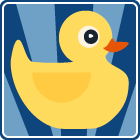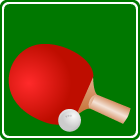


START
LESSON
GO TO THE GAMES
Click on the correct answer.
You will see the left side of an equation. Then you will see and hear two possible answers for the right side of that equation.
Click on the correct answer.
There are 10 questions in this test.
to start the lesson

anonymous
"Calculate gradients of linear graphs"
Elementary math lessons to learn
'3D shapes: name from diagram' for 3rd grade
3rd grade / Shapes / Identifying shapes / 3D shapes: name from diagram
Identify 3-dimensional shapes from diagrams
This topic helps you learn the names of many 3D shapes. The shapes in the topic are described below
- Sphere: A sphere is a round shape that looks like a ball. It is completely symmetrical, which means that every part of it looks the same. Examples of spheres include a tennis ball or the Earth (nearly).
- Cylinder: A cylinder is a shape that is shaped like a tin can. It has two flat, circular faces (called bases) that are the same size, and a curved body that connects the two bases. Examples of cylinders include a can of soup or a paper towel roll.
- Cone: A cone is a shape that looks like an ice cream cone or a party hat. It has a round base that connects to a point at the top. The sides of the cone slant inwards as they go up. Examples of cones include a traffic cone or a party hat.
- Triangular Prism: A triangular prism is a shape that has two triangular faces and three rectangular faces. It looks like a triangle that has been stretched out. Examples of triangular prisms include the Toblerone chocolate bar or the old type of tent.
- Square based pyramid: A square based pyramid is like the Great Pyramid of Giza or a pyramid-shaped cake. It has a square base and four triangular faces that meet at a point (called the apex) at the top.
- Cube: A cube is like a Rubik's Cube or a six-sided dice. It has six square faces that are the same size. The edges where the faces meet are also all the same length.
- Cuboid: A cuboid is like a cereal box or a brick. It has six rectangular faces like a cube but unlike the cube, the faces can be different sizes.
This topic shows you diagrams of different 3D shapes and you have to name them correctly. You may have noticed that the cube is a special type of cuboid where all the faces are the same sized square. This is true for a few of the shapes in this toic. You should always go with the most specific name, so if it is a cube go with cube even though cuboid is also technically correct.
With these interactive math lessons you will be learning "3D shapes: name from diagram" from
3rd grade / Shapes in 3 easy steps. The math in our lessons consists of 11 questions that ask you to identify the names of these three-dimensional (3D) shapes in various orientations.
There are 3 easy math lesson activities in this "3D shapes: name from diagram" tutorial. These activities progress step by step to help you the learner gradually master this math topic. The activities are based on "3 stage questioning", a method of learning that quickly and easily builds your confidence as you work through the short series of lessons that strengthen your knowledge of the math that you want to learn.
When you have completed the tutorial for a topic, you should try some of our games before finally doing the test for your chosen topic. See the Help box below for detailed instructions on how to use the lesson activities to help you learn your math more easily.
UXO * Duck shoot * The frog flies * Pong * Cat and mouse * The beetle and the bee
Rock fall * Four in a row * Sow grow * Choose or lose * Mix and match





How to use our tutorials to learn
'3D shapes: name from diagram' for 3rd grade
Introduction to the math topic
You start the tutorial with a lesson that introduces the math you will be learning. You will see a set of questions one at a time, and for each question you will see the written answer and also hear the answer to that question.
Repeat the question/answer by clicking on the brown speaker sign. Repeat the question/answer and expand the question graphic by clicking on the question box. Move between questions using the arrow buttons below the question. If there is additional information available for your chosen topic, the "i" button on the left upright bar will be brown on white. Click on the button to load the additional lesson information into the main interface.
Either / Or math lesson
This lesson moves on from the "Introduction" lesson and offers you two possible answers to each question. So, you will see a question then a voice will ask "Is this ... or is it ..." and you will have to choose which of the answers is the one that matches the question.
You choose an answer by clicking or tapping on one of the two answer boxes below the question. You can play the audio for each answer again by clicking on the speaker icon beside the written answer (if robot speech is available and enabled). The program will let you know each time whether you answered correctly. A star will light up red for a wrong answer or white/black for a correct answer.
This lesson asks you the questions in a random order compared to the introduction. At the end of the lesson, you can choose whether to repeat the lesson or move on to the next one.
What is it? math lesson
The final lesson of the tutorial shows you multiple possible answers for each question - you must choose the correct one. You are asked a question and below it are a list of two, three, or four possible written/numeric answers from this topic. Pressing the speaker icon will play the math audio for that answer.
For each picture, click on the answer that matches the question. The program will tell you whether you are right or not. As with the Either / Or activity a system of stars indicate your right and wrong answers. The What is it? lesson will show you all the questions you learned in the Introduction but in a random order.
When you complete the "What is it?" lesson, you can choose whether to go on to play some games with this topic, or whether you want to repeat some or all of the lesson activities in this tutorial. You should expect to get 80% of the answers correct in most of the activities before trying some of the Math games with this topic.











